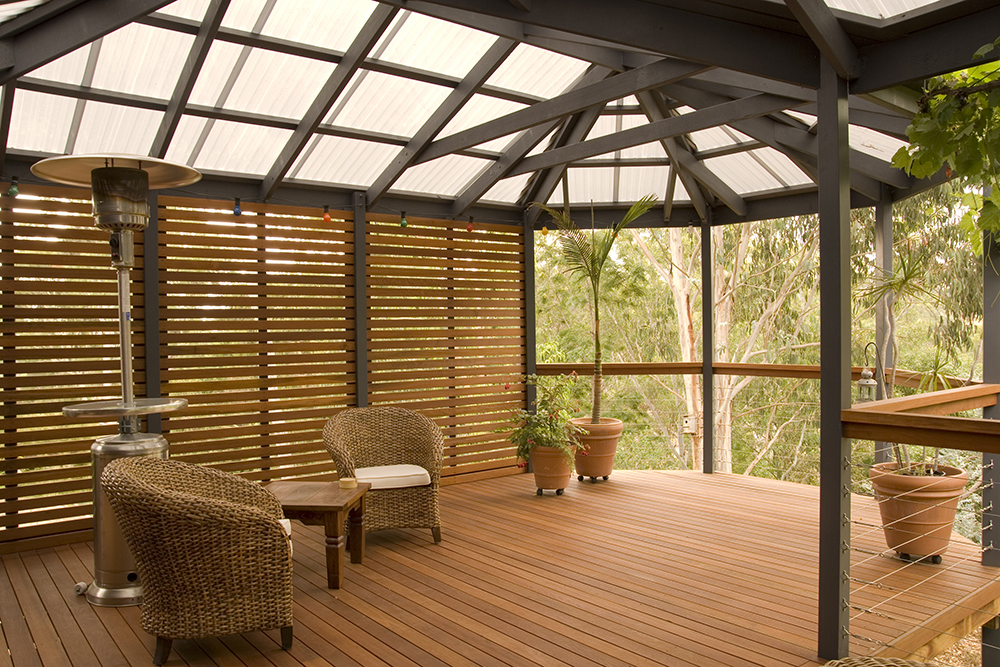Top Types of Decking Timber
Jan 06, 2015 22:02
It’s an important choice to make when it comes to softwoods decking timber, do you go for durability and strength or are you more interested in aesthetic value. You also have to think about how the wood will behave over time, how resistant it will be to weather and insects. There are many different types of decking wood available, here is a quick list to help you decide.

image via softwoods
hard with deep furrows. Iron bark was used by indigenous Australians to make spears and they also boiled the bark to use as a treatment for sores. This classic Australian wood is a high performing material that won’t let you down, an ideal wood for that perfect outdoor setting.

image via softwoods
Merbau
This is a popular hardwood grown in tropical areas of south-east Asia, Papa New Guinea, the pacific islands and also in parts of northern Queensland. Merbau is a versatile wood product that is often used for large-scale construction projects and outdoor use, such as retaining walls for embankments, but it is also used heavily in domestic settings for outdoor decking. It is naturally strong and highly durable. One of its most attractive features is the yellow brown hue of freshly cut timber that gradually darkens with age. Although it is important to be careful when sourcing Merbau as some plantations may have been illegally converted from other land uses. It is possible to find certified Merbau within Australia and you should check with our supplier about the origin of the wood.Jarrah
Jarrah is the classic Australian hardwood that has only recently lost some popularity to its tropical counter part Merbau. But nonetheless Jarrah remains a strong and versatile construction timber that will make a great addition to any outdoor setting. The variable hues - from rich red to brown - of Jarrah resemble the landscape of western Australia, where it grows in the aluminum rich plains of the state’s south-west corridor, from just east of Perth all the way down to Albany. It is an appealing design material not just for it’s colour but also texture, which can range from moderately course and even textured grain to some interlocked and wavy grain features. Jarrah is naturally resistant to weather, termites, rot and even marine borers, which makes it ideal for a variety of outdoor uses.Mountain Ash
For an alternatively coloured hardwood, mountain ash offers many of the same durability features as other woods but it is much lighter in colour, making it a more attractive option for some tastes. Mountain Ash is the tallest of the Australian eucalypt species and grows in the mountainous regions of Victoria and Tasmania. The wood is pale-brown in colour and is slightly more delicate than other types of wood and care most be taken when drying as it can be susceptible to collapse and internal checking, although once dried there will be minimal further shrinking.Ironbark
Regarded as one of the great Australian hardwood timbers throughout history, ironbark still stands up as a quality timber with versatile applications. It is one of the strongest and most durable timbers available and it is also highly resistance to termites and borers, so it is easy to see why it holds such an esteemed place in the regard of the Australian construction timbers. The appearance of the timber ranges from brownish to red with a straight grain that doesn’t usually contain distinctive features. The grey ironbark grows from 30m up to 50m high with a trunk diameter of about 1.5m; the bark can be dark brown or black and is veryhard with deep furrows. Iron bark was used by indigenous Australians to make spears and they also boiled the bark to use as a treatment for sores. This classic Australian wood is a high performing material that won’t let you down, an ideal wood for that perfect outdoor setting.







































































